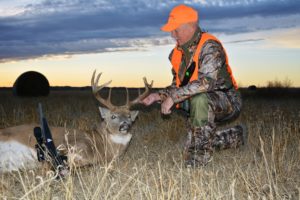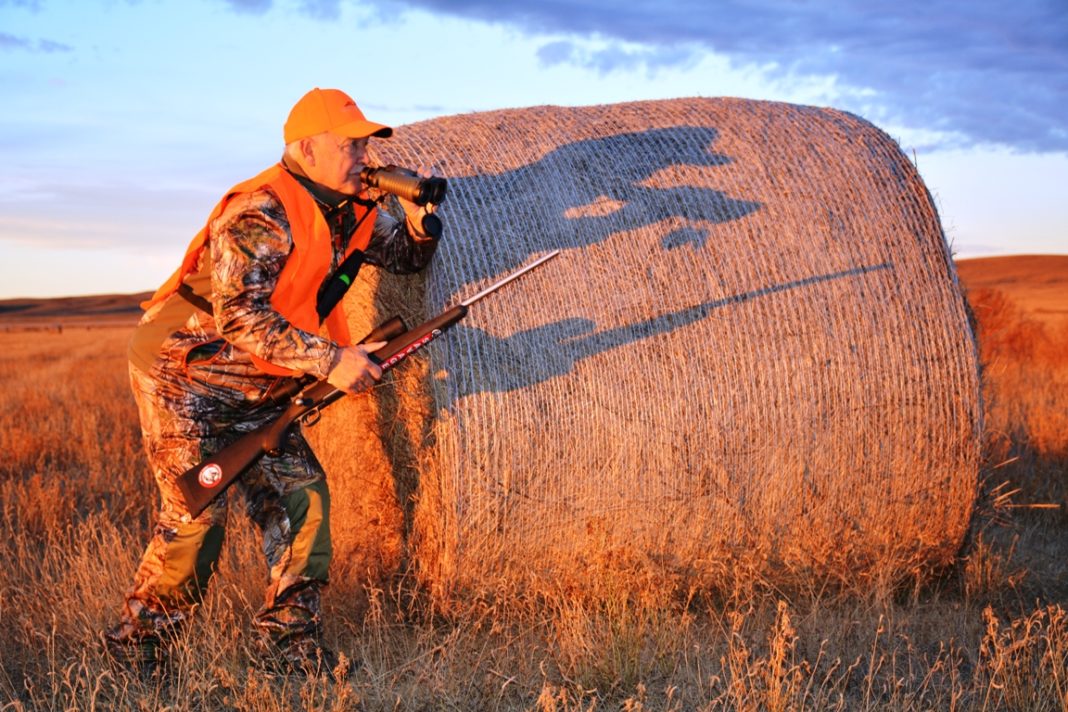Whitetail deer, like humans, use body language to communicate. If you are asking your boss for a raise or your gal about going hunting this weekend with the guys and you are seeing crossed arms, better make alternative plans. Interpreting deer body language can be critical for archers and gun-hunters. If a whitetail deer is alert, or worse on edge, it will often duck dramatically at the sound of a bow’s release causing the arrow to strike high in the shoulder or miss completely. Many archers won’t take a shot under these conditions, especially at 30 or 40 yards where the sound of the release easily beats the arrow to the deer. On close shot, archers can aim for the heart area which will compensate for the “ducking” sequence.
Why It Matters-
 Rifle hunters want to take their best unobstructed shot and if a buck suddenly appear on the way to a shooting lane, the hunter needs to “read” the deer’s behavior in order to wait for the shooting lane or take a poke through a tighter window. Josh Honeycutt speaks to two segments of deer body language in the post from the Realtree website with a focus on the ears and tail. Aside from being a barometer of alertness, as Honeycutt will describe, the tail of a deer often signals movement. Going back to that rifle hunting scenario where a buck needs to take the proverbial “one more step,” the animal will tell you when it’s ready to take a step by a quick wag of its tail. I grunted in a buck this fall that came so fast and quickly that I couldn’t raise my rifle before I was in plain view. It was a big 9-point that responded in the first 10 minutes of a 3-day hunt. The buck “wheezed” and was intent on finding that grunting buck and during this close encounter, I saw it wag its tail several time before moving. No, I didn’t shoot. Yes, that was a mistake as it was the best buck I’d see on the trip. … [continued]
Rifle hunters want to take their best unobstructed shot and if a buck suddenly appear on the way to a shooting lane, the hunter needs to “read” the deer’s behavior in order to wait for the shooting lane or take a poke through a tighter window. Josh Honeycutt speaks to two segments of deer body language in the post from the Realtree website with a focus on the ears and tail. Aside from being a barometer of alertness, as Honeycutt will describe, the tail of a deer often signals movement. Going back to that rifle hunting scenario where a buck needs to take the proverbial “one more step,” the animal will tell you when it’s ready to take a step by a quick wag of its tail. I grunted in a buck this fall that came so fast and quickly that I couldn’t raise my rifle before I was in plain view. It was a big 9-point that responded in the first 10 minutes of a 3-day hunt. The buck “wheezed” and was intent on finding that grunting buck and during this close encounter, I saw it wag its tail several time before moving. No, I didn’t shoot. Yes, that was a mistake as it was the best buck I’d see on the trip. … [continued]









![The Best Deer Camp Chili [VIDEO] Deer Chili Ingredients, Tomatoes, Chili Spices](/wp-content/uploads/2015/10/Deer-Chili-Deer-Camp-Recipe-218x150.jpg)








![How to Call Elk Early in the Season [VIDEO]](/wp-content/uploads/2016/08/byers003-218x150.jpg)




![Idiots Disturb Hunter: How Would You Have Handled It? [VIDEO]](/wp-content/uploads/2015/10/DSC00110-e1474487693878-100x70.jpg)
![Albino Buck Shocked to Shed His Antlers [VIDEO]](/wp-content/uploads/2015/10/AlbinoDeer-100x70.jpg)